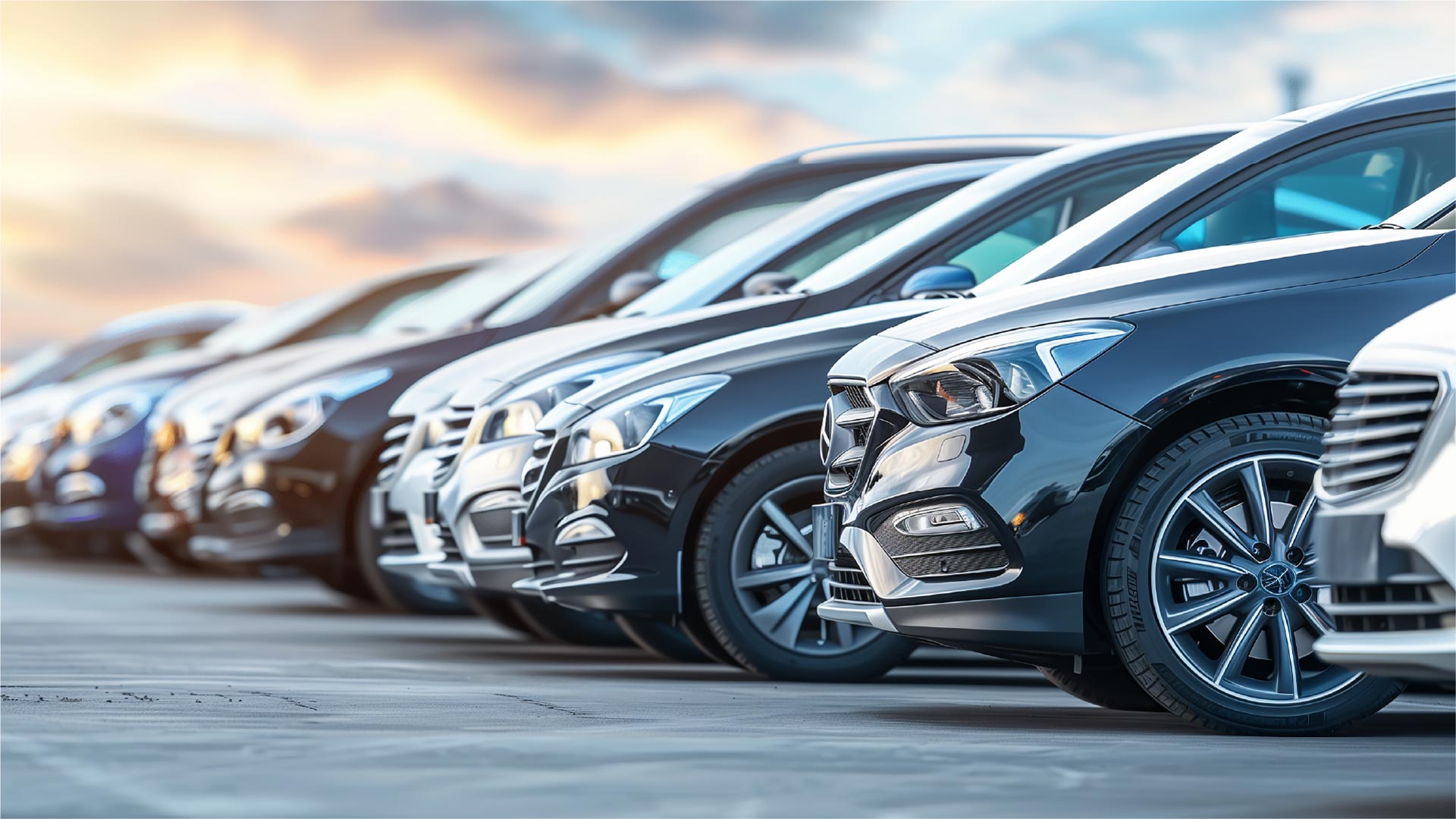Dash cams that protect driver privacy without missing key events
Privacy-focused dash cams help fleets reduce risk and protect drivers.Take the 2-minute assessment to evaluate your current setup.

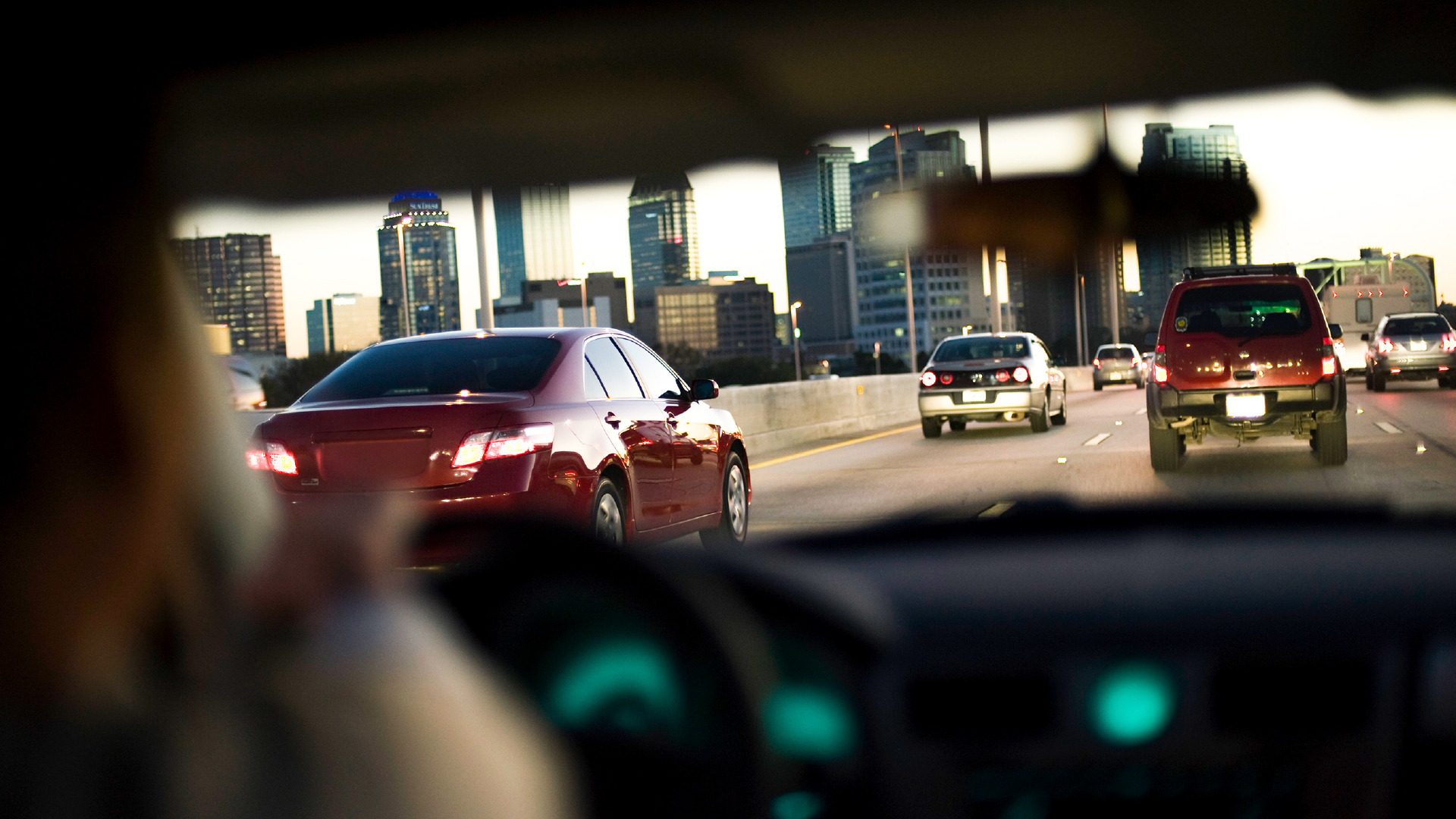
Key Insights
- Privacy-focused dash cams help fleets capture key safety events without continuous recording or invasive monitoring.
- Event-based systems, secure access controls and local processing give managers the insights they need while building driver trust.
- Use the 2-minute self-assessment to evaluate whether your current dash cam setup strikes the right balance between safety, cost and privacy.
Dash cams have become a standard tool in fleet management, and for good reason. They help clarify what really happened during risky events, support training and can make a big difference in reducing collisions and claims.
But as dash cams become more common, so do questions about how they’re being used, and how far is too far when it comes to recording drivers.
Because for all the benefits, there’s real concern, especially from drivers, about where the footage goes, who sees it and whether the camera ever stops rolling.
The good news is that fleets don’t have to choose between safety and privacy. Newer systems are built to focus on safety events and keep everything else off the record.
Understanding driver concerns before they turn into turnover
Most drivers take safety seriously. When they push back it’s not because they don’t care. It’s usually because something doesn't feel fair. What they’re frustrated by is the feeling that they’re being watched instead of supported.
Ask around and you’ll hear the same things, again and again:
“Is the camera always on, even when I’m parked?”
“Who’s watching this footage?”
“Does this have a microphone? Are my conversations being recorded?
“Can this be used against me, even if I did nothing wrong?”
“What happens if this gets into the wrong hands?”
And they’re not just venting. One industry study found that driver-facing cameras rated just 2.24 out of 10 in driver approval, citing privacy invasion and footage misuse as the top concerns. Another ATRI survey showed that privacy concerns are the biggest challenge fleets face when rolling out dash cams.
At the same time, 68% of drivers support technology that helps improve their driving and protects them in the event of an incident. Having dash cams is not the issue. It’s how they’re used, and whether drivers feel respected when they’re on.
These are real concerns and they’re growing louder. Drivers can tell the difference between a tool that’s meant to help them and one that just keeps tabs on them. The unfortunate result is that good drivers walk away. Others disengage. In the right situations, a basic setup that captures the event and nothing more is often the best way to get buy-in and move safety efforts forward.
Fleets can keep experienced drivers in the seat, and bring new ones in with confidence by choosing the dash cameras that are right for them.
Rethinking privacy in fleet safety
The conversation around driver privacy has changed. Fleets today are not only judged by how well they respond to incidents, but by how they prevent them, track them and store the evidence. There’s more pressure, and more scrutiny, than ever before.
From GDPR in Europe to CCPA in California, regulations are tightening. Access to footage, data retention, even who gets to review recordings are all under scrutiny. And not just from lawmakers. Drivers are asking questions. So are unions. So are legal teams.
If your dash cam program doesn’t have a clear privacy framework, you're behind the curve and exposed. Winning fleets are realizing that when you prioritize privacy, everything else gets better, too. Drivers are more likely to engage. Training conversations become more collaborative. Trust goes up, turnover goes down.
That change starts with choosing the right technology. Systems that only record when they need to, that store data securely and that make it crystal clear who can access what, and when.
For fleet managers, that choice clears a path. Rollouts move faster, teams push back less and the policies you’ve spent months developing actually get used the way they’re meant to. When privacy is built in from the start, it feels less like surveillance and more like support.
What to look for in a privacy-first dash cam
Not all dash cams are built the same. That’s why it’s important to understand and explain to drivers the difference between being on, recording, and AI monitoring. Unlike traditional dash cams that constantly record, most AI-enabled solutions are always on in the background but only store or transmit video when a risk or event is detected. This means your drivers aren’t being constantly watched, helping protect their privacy while still capturing the footage that matters most for safety and accountability. If you want to protect your drivers and your business, here’s what to look for in a dash cam solution.
Event-based recording
Some fleets don’t need full coverage. They just need to capture what happened when something goes wrong. Event-based systems record during key moments like hard braking, unsafe driving or collisions. Some also let drivers start a recording when something doesn’t feel right. It’s a simple way to get the footage you need without adding complexity or overstepping. The camera may always be on, but it only records when it should.
Road-facing footage
Forward-facing cameras offer a clear, reliable view of the road, where the risk actually unfolds. They capture what the vehicle encountered, how the driver responded and what triggered the event. That’s often all a fleet needs to make fast, informed decisions and support drivers effectively.
Secure storage
Footage should be encrypted and protected as soon as it’s captured. Look for systems that process data locally and block direct downloads. Video access should be managed through your telematics platform, instead of being pulled off the device. Defined storage controls limit exposure and keep sensitive footage where it belongs.
Clear access controls
Drivers care about who sees their footage, and so should you. Clear access settings should be built in from the start: role-based permissions, audit trails and strict sharing limits. These controls prevent misuse, reduce internal friction and help ensure video is used only when it’s needed.
Local processing
When video is analyzed on the device, not sent off to a remote server, fleets get faster alerts and tighter control. Only the important events are flagged, and sensitive footage stays protected right where it started. But local doesn’t always mean secure. The device itself still needs to meet modern security standards, from encryption to firmware protection, to keep your data safe.
See where you stand with a quick 2-minute assessment
Fleet safety is non-negotiable, but so is trust. If your current dash cam setup is falling short on either side, it could be costing more than you think. Use this quick check assessment to see if your system is built to deliver protection without unnecessary surveillance or spend.
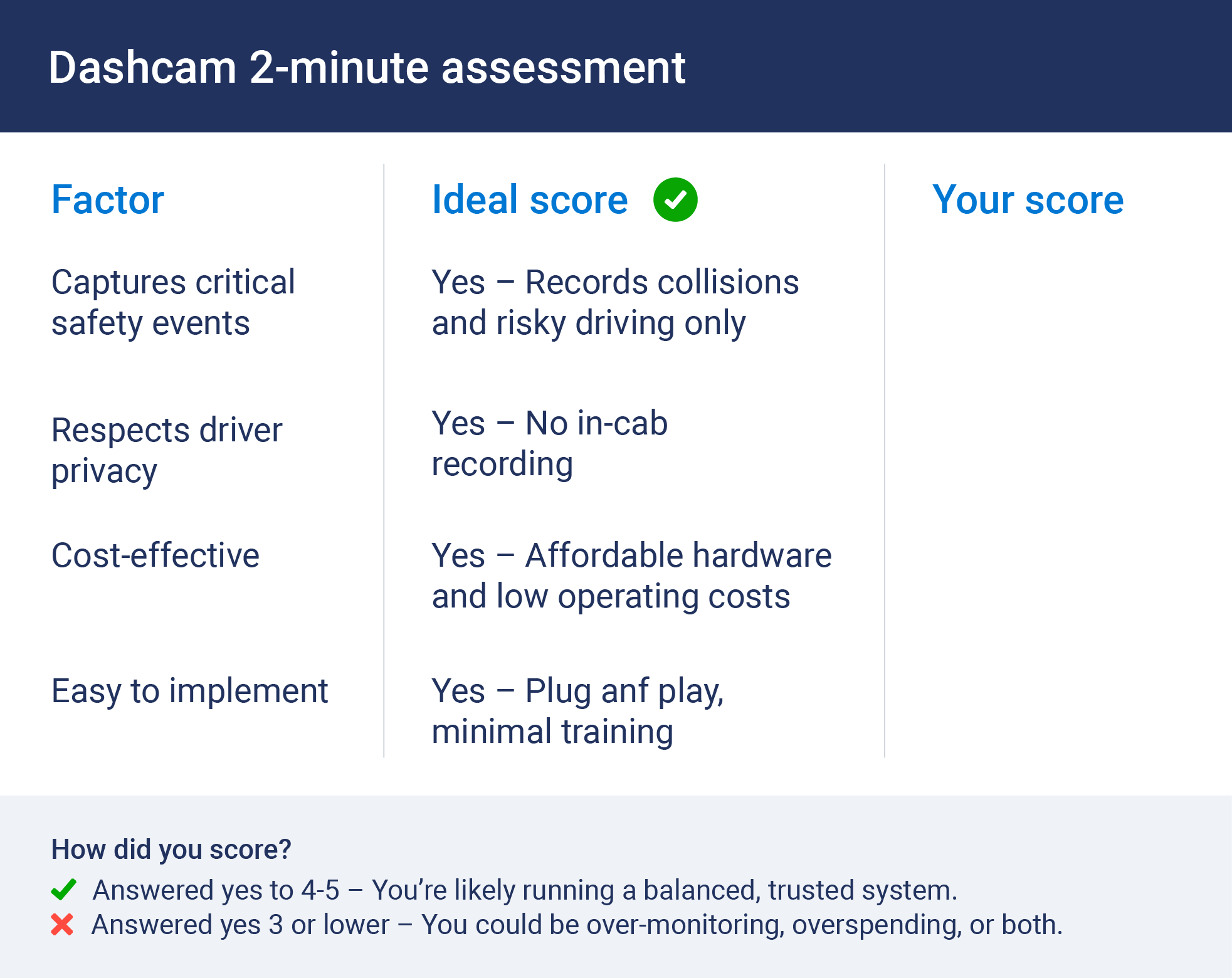
How’d you score?
✔️ Answered yes to 4-5 – You’re likely running a balanced, trusted system
❌ Answered yes 3 or lower – You could be over-monitoring, overspending, or both
Ready to upgrade your fleet safety, without compromising driver privacy? Get the full details on Go Focus and see how it delivers video built for safety, trust, and control.
Subscribe to get industry tips and insights
Table of Contents
Subscribe to get industry tips and insights
Related posts
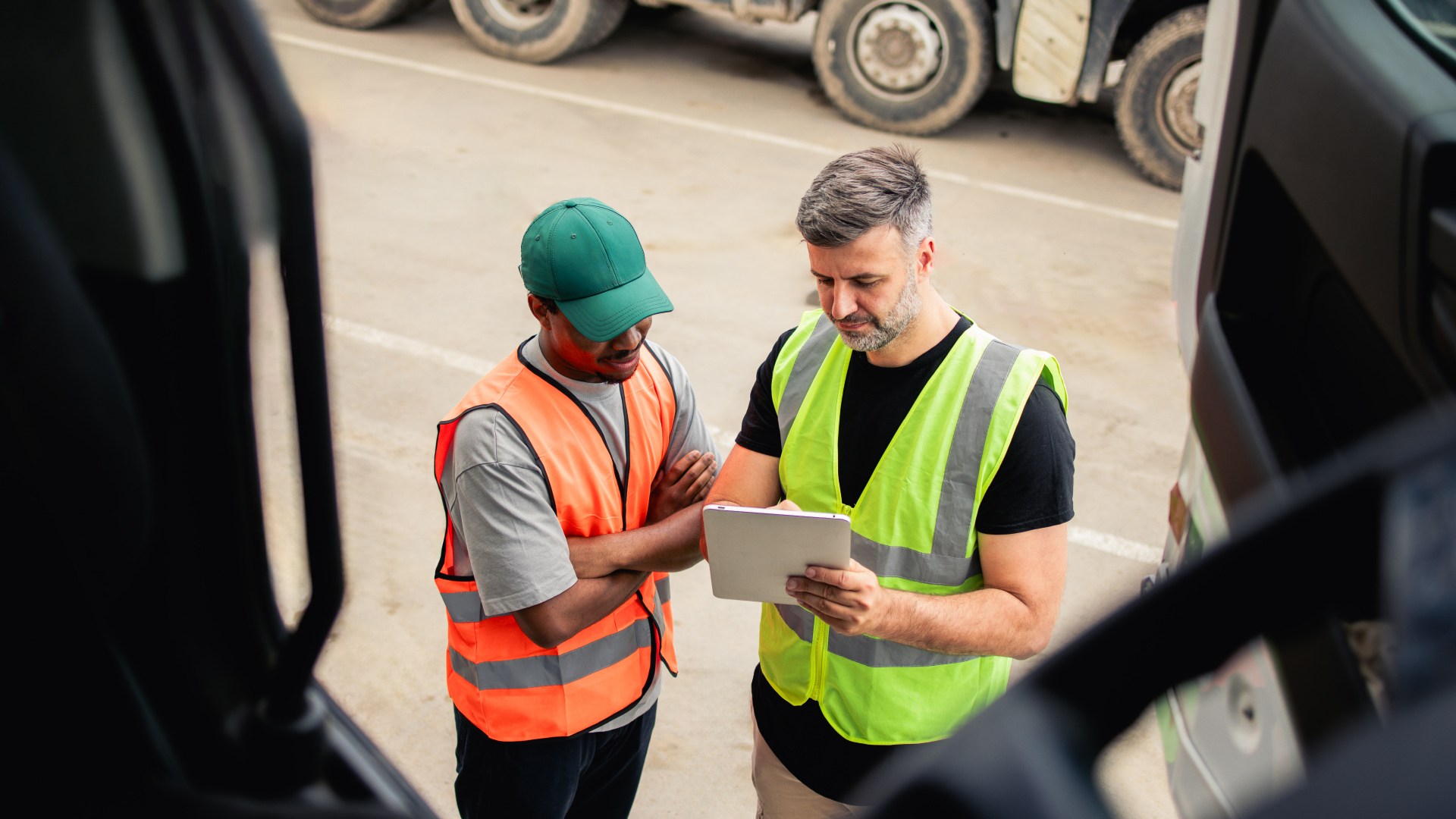
Building a world-class driver training program: Essential strategies for truckload carriers
April 15, 2025
4 minute read
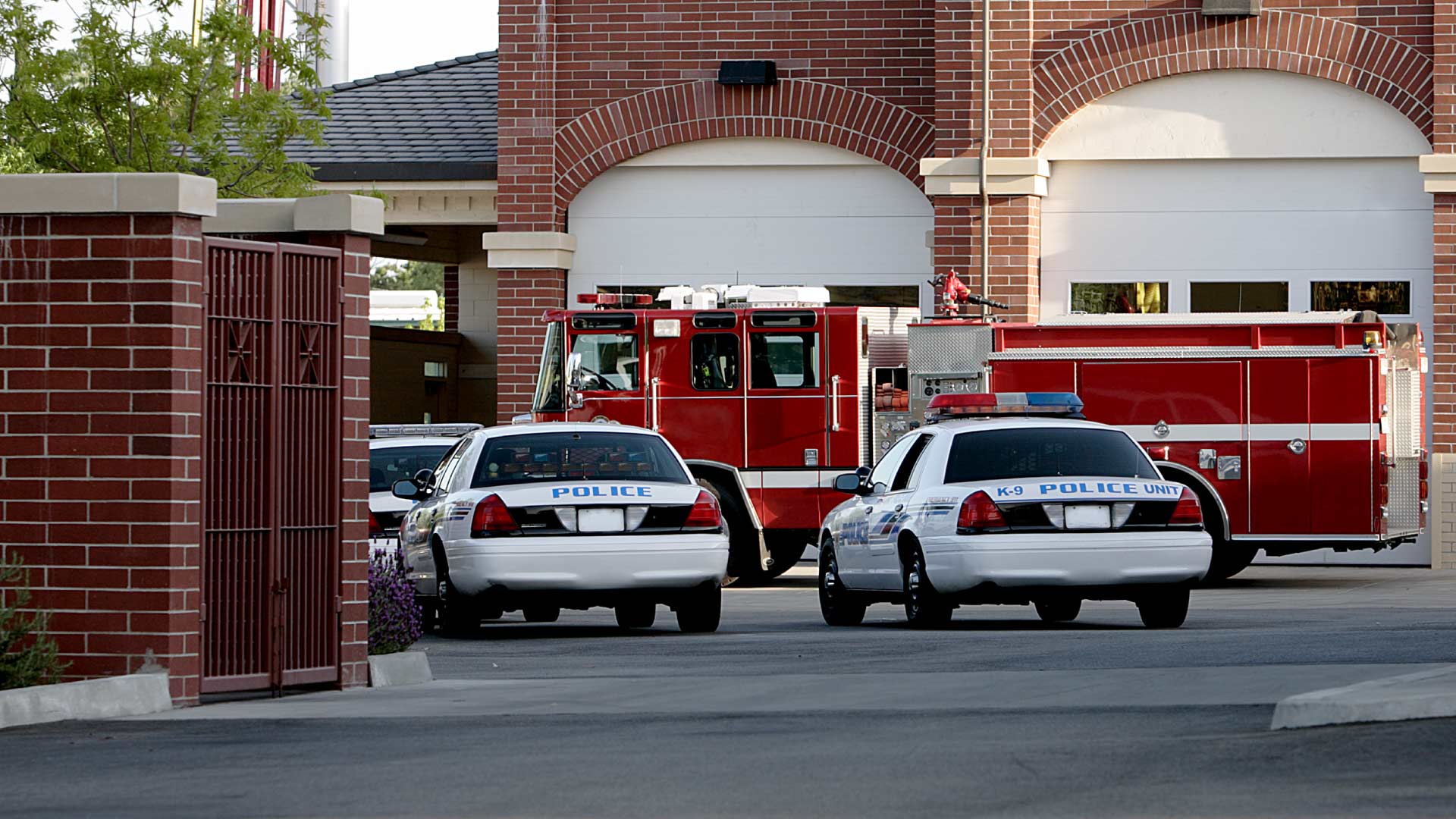
Embracing public safety technologies in the face of opposition
April 15, 2025
4 minute read
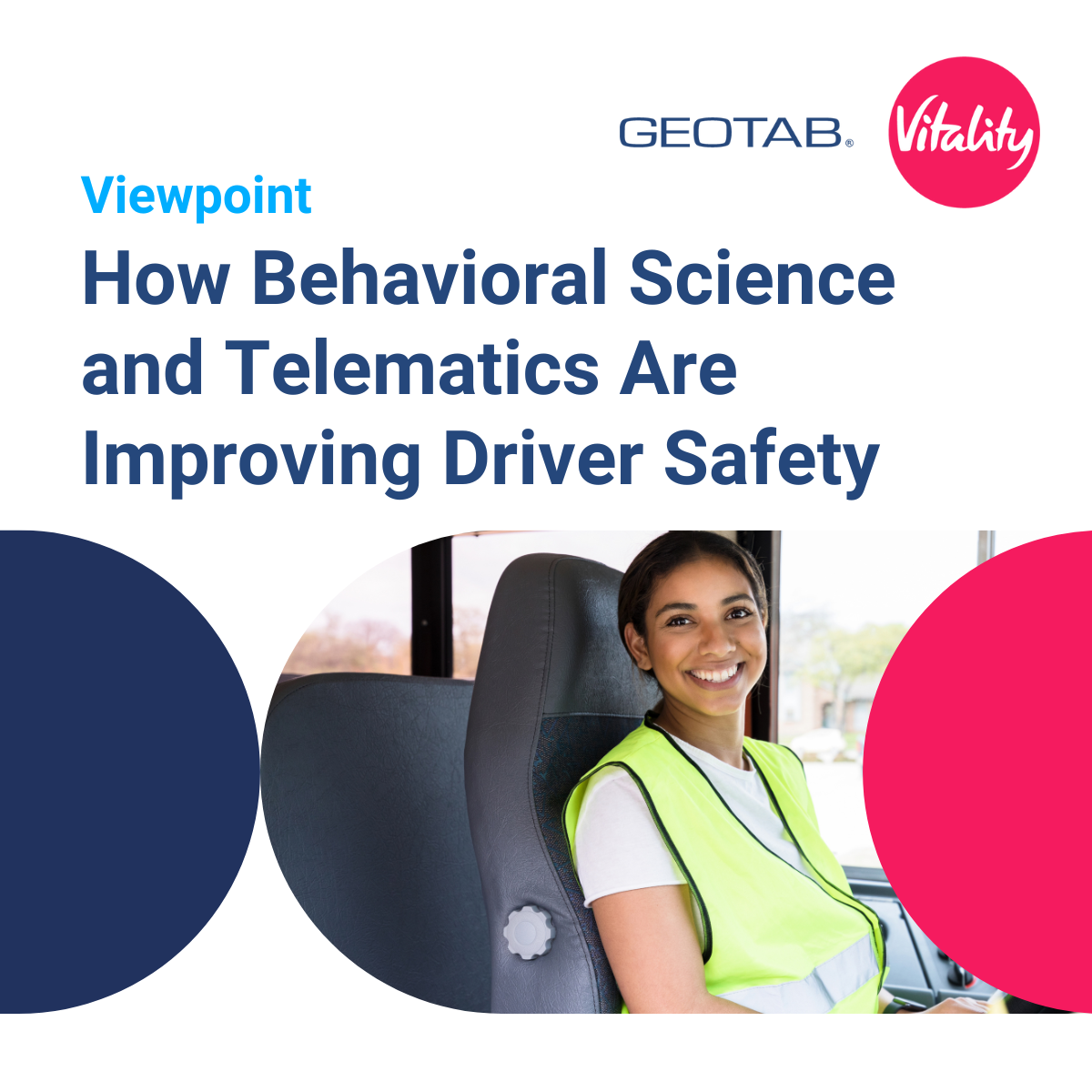
Unlocking Safer Roads: How Behavioral Science and Technology Are Improving Driver Safety
April 14, 2025
2 minute read

What is government fleet management software and how is it used?
April 10, 2025
3 minute read

Beyond the road: Enhancing school bus interior safety with advanced technology
April 10, 2025
5 minute read
